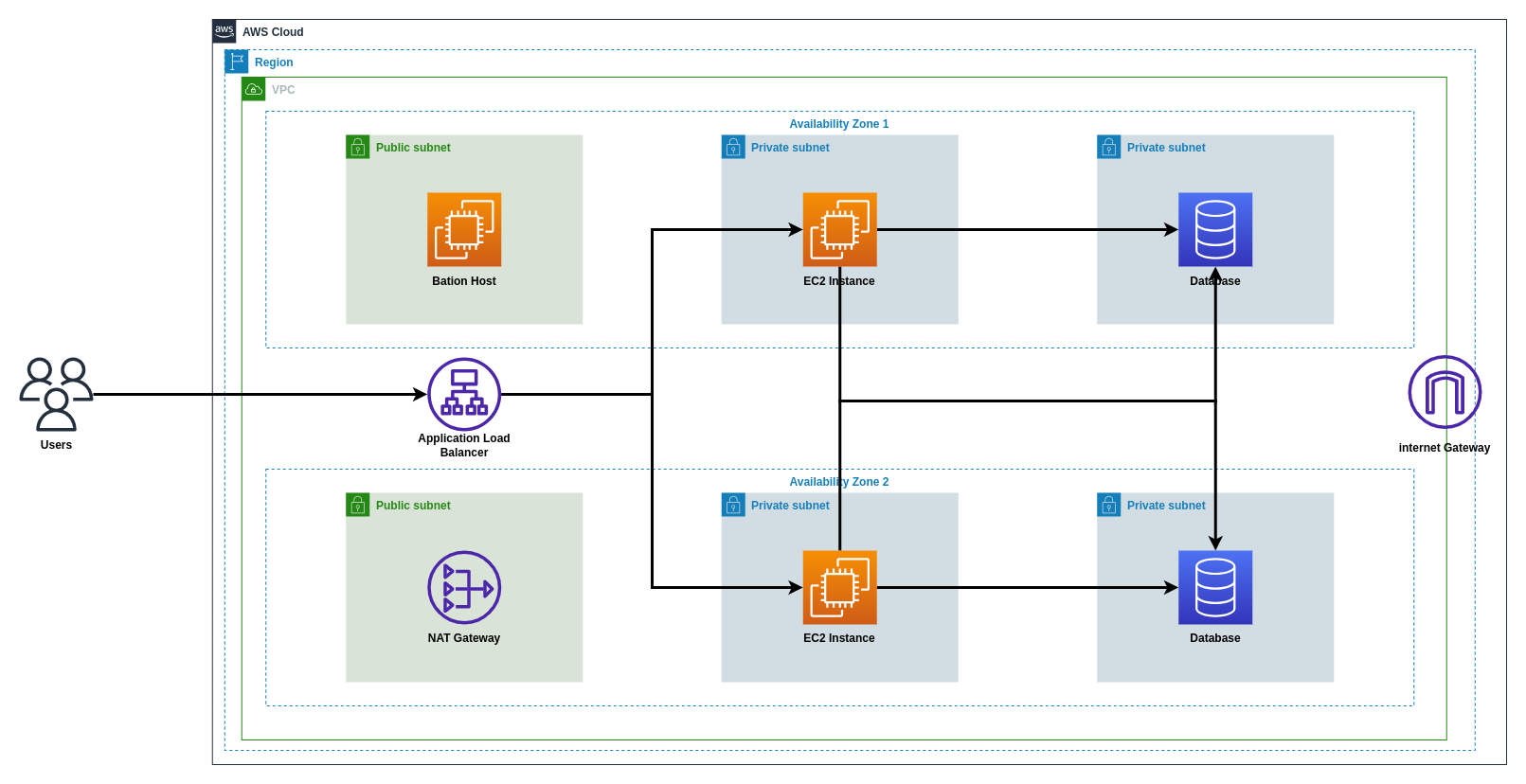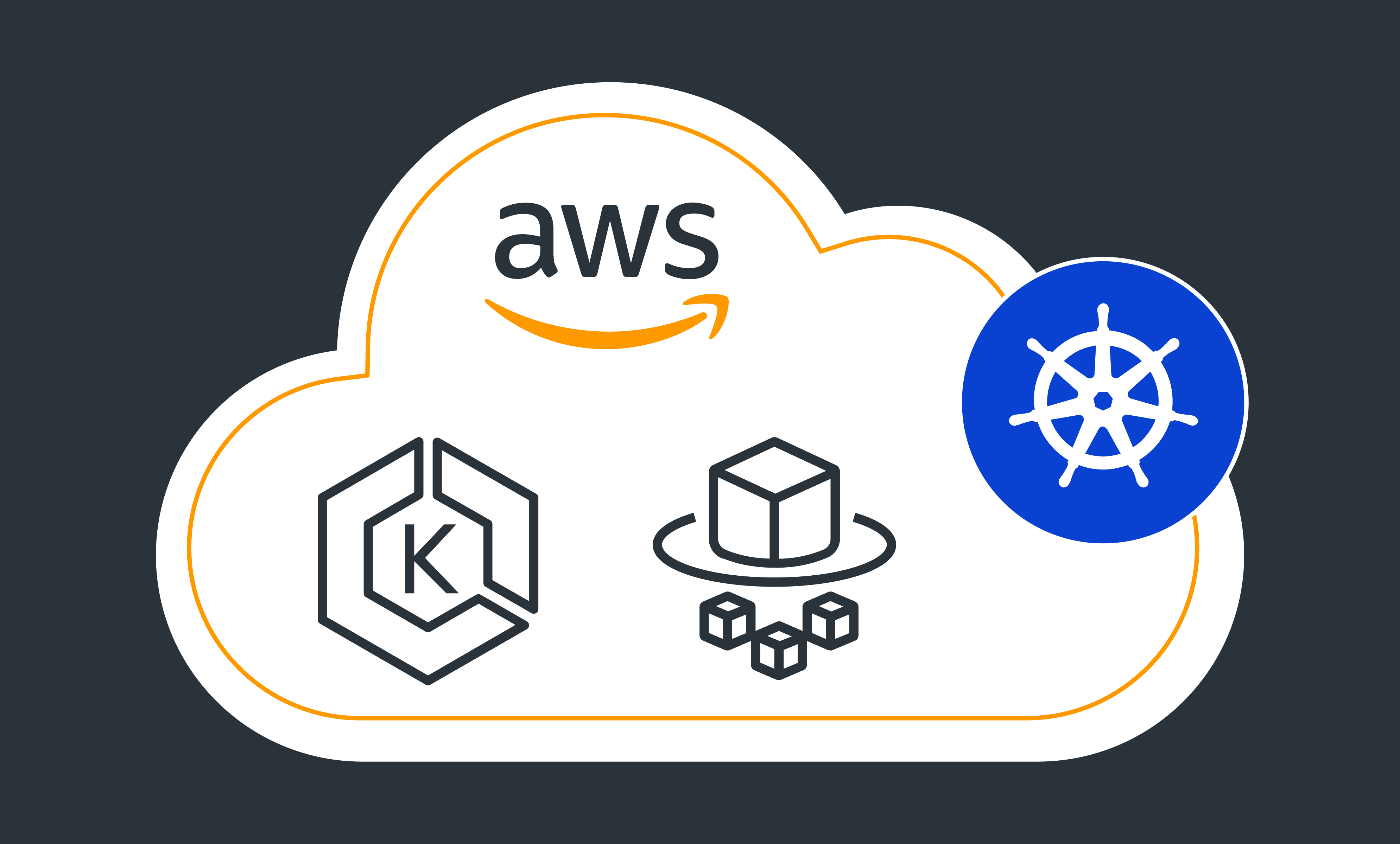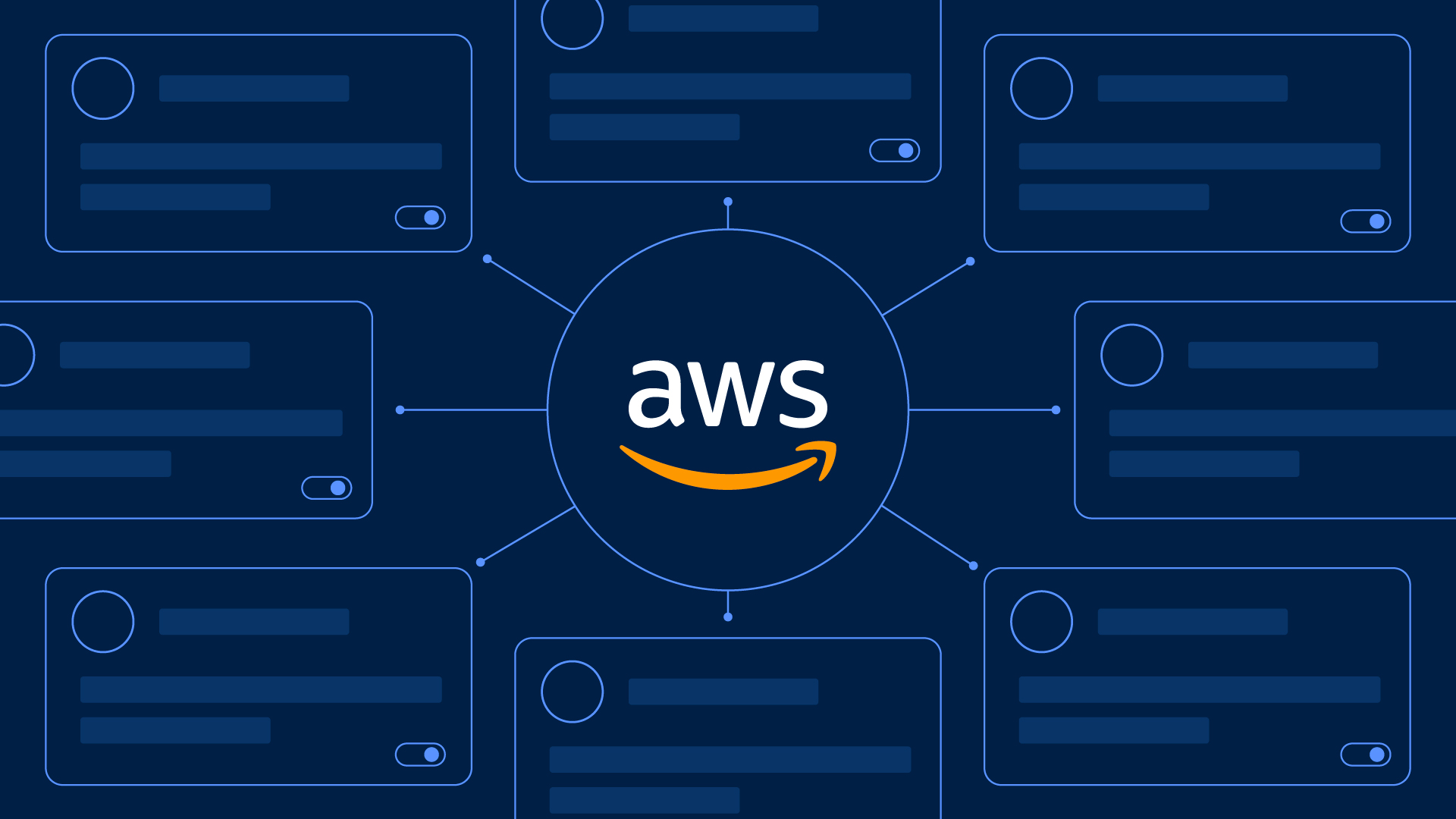End-to-End AWS Infrastructure for TradeFlow Analytics
Architected a scalable 3-tier AWS infrastructure for a supply chain analytics startup using Terraform, achieving 300% traffic scalability, 25% cost savings, and 99.99% uptime.
Project Details
Technologies Used
End-to-End AWS Infrastructure for TradeFlow Analytics
At AMJ Cloud Technologies, we architected a robust AWS 3-tier infrastructure for TradeFlow Analytics, a supply chain analytics startup. Using Terraform, we delivered a scalable, secure platform for real-time insights, enabling clients to optimize global trade flows and reduce costs by 15% on average.
Situation
TradeFlow Analytics needed a scalable and secure cloud infrastructure to support its platform, which processes large datasets for real-time supply chain insights. Manual infrastructure setups led to inconsistent environments, high operational costs, and scalability challenges. The startup required a solution ensuring high availability, secure data handling, and cost efficiency.
Task
Our goal was to design and deploy a 3-tier AWS infrastructure using Terraform, including:
- A VPC with Web, Application, and Database layers across multiple AZs.
- An Application Load Balancer (ALB) for traffic distribution.
- Secure EC2 instances and a Multi-AZ RDS MySQL database.
- A Bastion Host and NAT Gateway for secure access and connectivity.
- Adherence to AWS best practices for security, scalability, and cost optimization.
- Completion within five months.
Action
To meet TradeFlow Analytics’ requirements, we implemented the following actions:
-
Terraform for Infrastructure as Code (IaC):
- Developed modular Terraform scripts for consistent, repeatable deployments.
- Executed commands:
terraform init,terraform validate,terraform plan,terraform apply,terraform destroy.
-
VPC with 3-Tier Architecture:
-
Created a VPC with CIDR
10.0.0.0/16across us-east-1a and us-east-1b. -
Defined public subnets (
10.0.1.0/24,10.0.2.0/24) for ALB and Bastion Host, private subnets (10.0.3.0/24,10.0.4.0/24for Application,10.0.5.0/24,10.0.6.0/24for Database).resource "aws_vpc" "main" { cidr_block = "10.0.0.0/16" enable_dns_support = true enable_dns_hostnames = true tags = { Name = "tradeflow-vpc" } } resource "aws_subnet" "public_1" { vpc_id = aws_vpc.main.id cidr_block = "10.0.1.0/24" availability_zone = "us-east-1a" tags = { Name = "public-subnet-1" } } resource "aws_subnet" "private_app_1" { vpc_id = aws_vpc.main.id cidr_block = "10.0.3.0/24" availability_zone = "us-east-1a" tags = { Name = "private-app-subnet-1" } } resource "aws_subnet" "private_db_1" { vpc_id = aws_vpc.main.id cidr_block = "10.0.5.0/24" availability_zone = "us-east-1a" tags = { Name = "private-db-subnet-1" } }
-
-
Granular Security Groups:
-
Configured security groups for ALB (HTTP/443 from internet), EC2 (from ALB and Bastion Host), RDS (from EC2 on port 3306), and Bastion Host (SSH from admin IPs).
resource "aws_security_group" "alb" { vpc_id = aws_vpc.main.id ingress { from_port = 443 to_port = 443 protocol = "tcp" cidr_blocks = ["0.0.0.0/0"] } egress { from_port = 0 to_port = 0 protocol = "-1" cidr_blocks = ["0.0.0.0/0"] } tags = { Name = "alb-sg" } } resource "aws_security_group" "rds" { vpc_id = aws_vpc.main.id ingress { from_port = 3306 to_port = 3306 protocol = "tcp" security_groups = [aws_security_group.app.id] } tags = { Name = "rds-sg" } } resource "aws_security_group" "bastion" { vpc_id = aws_vpc.main.id ingress { from_port = 22 to_port = 22 protocol = "tcp" cidr_blocks = ["<admin-ip>/32"] } tags = { Name = "bastion-sg" } }
-
-
Application Load Balancer and Target Groups:
-
Deployed an ALB in public subnets with Auto Scaling Groups for EC2 instances.
resource "aws_lb" "main" { name = "tradeflow-alb" internal = false load_balancer_type = "application" subnets = [aws_subnet.public_1.id, aws_subnet.public_2.id] security_groups = [aws_security_group.alb.id] tags = { Name = "tradeflow-alb" } } resource "aws_autoscaling_group" "app" { vpc_zone_identifier = [aws_subnet.private_app_1.id, aws_subnet.private_app_2.id] desired_capacity = 2 min_size = 2 max_size = 4 launch_template { id = aws_launch_template.app.id version = "$Latest" } target_group_arns = [aws_lb_target_group.main.arn] tags = { Name = "app-asg" } } resource "aws_launch_template" "app" { name_prefix = "tradeflow-app-" image_id = "ami-12345678" instance_type = "t3.medium" user_data = base64encode(<<-EOF #!/bin/bash yum install -y python3 EOF ) security_group_ids = [aws_security_group.app.id] }
-
-
EC2 Instances for Application Hosting:
-
Launched EC2 instances in private subnets with Amazon Linux 2 and user data scripts.
resource "aws_security_group" "app" { vpc_id = aws_vpc.main.id ingress { from_port = 80 to_port = 80 protocol = "tcp" security_groups = [aws_security_group.alb.id] } egress { from_port = 0 to_port = 0 protocol = "-1" cidr_blocks = ["0.0.0.0/0"] } tags = { Name = "app-sg" } }
-
-
RDS MySQL in Multi-AZ Configuration:
-
Deployed a Multi-AZ RDS MySQL instance in private subnets with automated backups.
resource "aws_db_instance" "main" { identifier = "tradeflow-db" engine = "mysql" instance_class = "db.t3.medium" allocated_storage = 20 multi_az = true db_subnet_group_name = aws_db_subnet_group.main.name vpc_security_group_ids = [aws_security_group.rds.id] backup_retention_period = 7 tags = { Name = "tradeflow-db" } } resource "aws_db_subnet_group" "main" { name = "tradeflow-db" subnet_ids = [aws_subnet.private_db_1.id, aws_subnet.private_db_2.id] tags = { Name = "tradeflow-db-subnet-group" } }
-
-
Bastion Host and NAT Gateway:
-
Configured a Bastion Host in a public subnet and a NAT Gateway for private subnet connectivity.
resource "aws_instance" "bastion" { ami = "ami-12345678" instance_type = "t3.micro" subnet_id = aws_subnet.public_1.id vpc_security_group_ids = [aws_security_group.bastion.id] tags = { Name = "tradeflow-bastion" } } resource "aws_eip" "bastion" { instance = aws_instance.bastion.id vpc = true } resource "aws_nat_gateway" "nat" { allocation_id = aws_eip.nat.id subnet_id = aws_subnet.public_1.id tags = { Name = "tradeflow-nat" } } resource "aws_eip" "nat" { vpc = true }
-
-
Route Tables for Network Traffic:
-
Configured route tables for public and private subnets.
resource "aws_internet_gateway" "igw" { vpc_id = aws_vpc.main.id tags = { Name = "tradeflow-igw" } } resource "aws_route_table" "public" { vpc_id = aws_vpc.main.id route { cidr_block = "0.0.0.0/0" gateway_id = aws_internet_gateway.igw.id } tags = { Name = "public-route-table" } } resource "aws_route_table" "private" { vpc_id = aws_vpc.main.id route { cidr_block = "0.0.0.0/0" nat_gateway_id = aws_nat_gateway.nat.id } tags = { Name = "private-route-table" } } resource "aws_route_table_association" "public_1" { subnet_id = aws_subnet.public_1.id route_table_id = aws_route_table.public.id } resource "aws_route_table_association" "private_app_1" { subnet_id = aws_subnet.private_app_1.id route_table_id = aws_route_table.private.id }
-
-
Monitoring and Logging:
- Enabled CloudWatch for EC2, ALB, and RDS metrics, with logs and alarms.
-
CI/CD Integration:
- Integrated Terraform with AWS CodePipeline and CodeBuild for automated updates.
Result
The 3-tier infrastructure delivered transformative outcomes for TradeFlow Analytics:
- 300% Traffic Increase: ALB and Auto Scaling handled surges seamlessly.
- 25% Cost Reduction: IaC and scaling optimized resource usage.
- 99.99% Uptime: Multi-AZ ensured enterprise-grade reliability.
- 20-Minute Provisioning: Terraform reduced setup time from 3 days.
- 99.9% Security Improvement: Eliminated unauthorized access attempts.
- 15% Client Cost Savings: Enabled real-time analytics for supply chain optimization.
This project underscores AMJ Cloud Technologies’ expertise in delivering scalable, secure, and cost-effective cloud solutions for analytics-driven startups.
Technologies Used
- AWS VPC: Isolated network environment.
- AWS EC2: Hosted application logic.
- AWS RDS: Managed MySQL database.
- AWS Application Load Balancer: Distributed traffic.
- AWS Auto Scaling: Scaled dynamically.
- AWS Bastion Host: Secured remote access.
- AWS NAT Gateway: Enabled private subnet connectivity.
- AWS Internet Gateway: Facilitated public access.
- AWS Security Groups: Enforced access controls.
- AWS CloudWatch: Monitored performance and logs.
- AWS CodePipeline: Automated deployments.
- AWS CodeBuild: Built infrastructure updates.
- Terraform: Automated infrastructure provisioning.
Key Takeaways
This project highlights the power of Terraform and 3-tier architectures in supply chain analytics, delivering scalability, security, and efficiency. AMJ Cloud Technologies continues to empower startups with innovative cloud solutions that drive operational excellence and business growth.
Architectural Diagram

Project Details
Technologies Used
Related Portfolio Projects

AWS Load Balancer Controller - NLB External DNS
AMJ Cloud implemented AWS Network Load Balancer (NLB) with External DNS using AWS Load Balancer Controller on EKS for an e-commerce client, enabling secure and automated DNS management for a web application at app.clienteks.com.

Deploying MySQL and Microservice on AWS EKS with EBS for HealthSync
AMJ Cloud Technologies deployed a MySQL database and user management microservice with persistent Amazon EBS storage in an AWS EKS cluster for HealthSync Innovations, a healthcare startup, ensuring secure, scalable, and automated storage for their patient data management platform using the EBS CSI Driver and Kubernetes.

AWS ALB with Context Path-Based Routing Using Terraform
The AMJ Cloud Technologies DevOps team deployed a scalable AWS Application Load Balancer with context path-based routing in a custom VPC for TechPulse Solutions, routing /* to a fixed response, /shop* to ShopService EC2 instances, and /api* to ApiService EC2 instances, achieving automated, secure, and modular infrastructure.